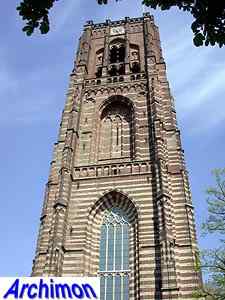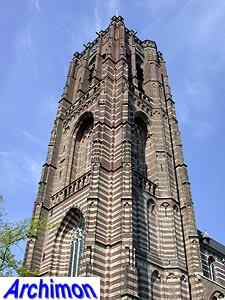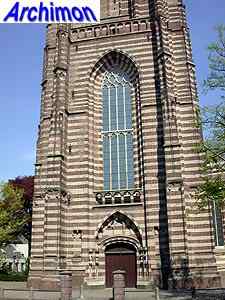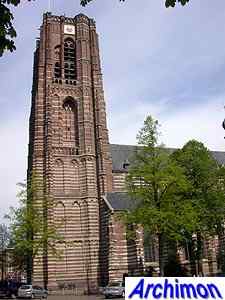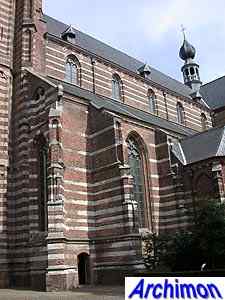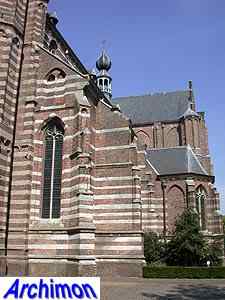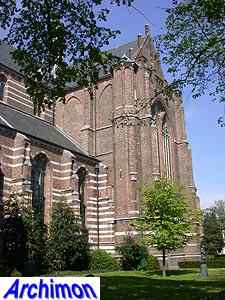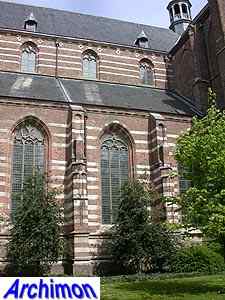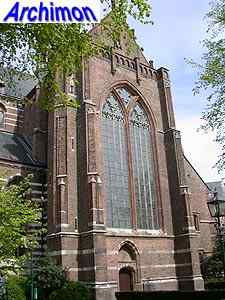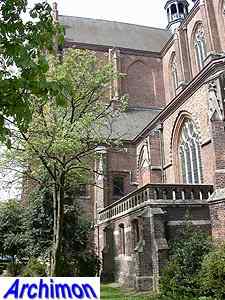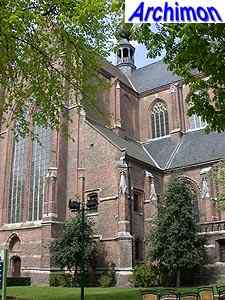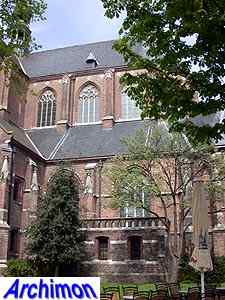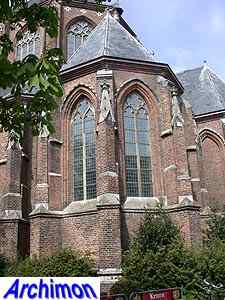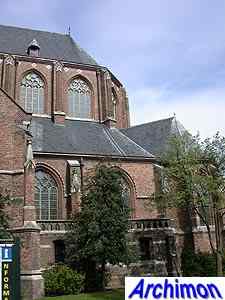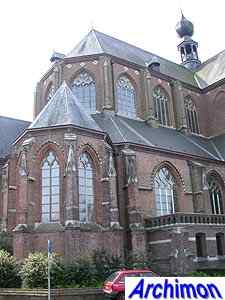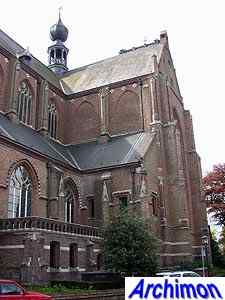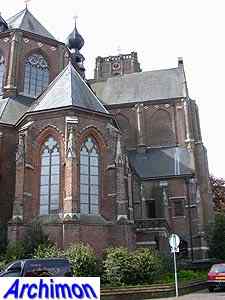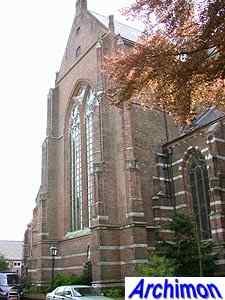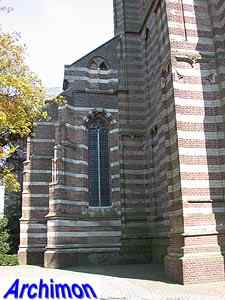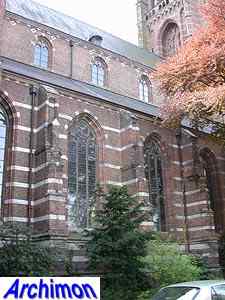
Part 1/2
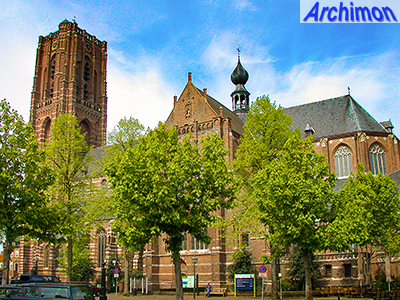 Oirschot's
St. Petrus' Banden ('St. Peter in Chains') is a masterpiece of
the so-called Kempische Gothiek ('Campine Gothicism'), the specific Campine variant
of Brabantine Gothicism (see Gothicism
for more information). Unlike churches in 'classic' Brabantine Gothic style,
in the Campine variant brick is the primary building material, with natural stone (in this case tuff) only used in
for decoration, especially for the towers and mostly as layers.
Oirschot's
St. Petrus' Banden ('St. Peter in Chains') is a masterpiece of
the so-called Kempische Gothiek ('Campine Gothicism'), the specific Campine variant
of Brabantine Gothicism (see Gothicism
for more information). Unlike churches in 'classic' Brabantine Gothic style,
in the Campine variant brick is the primary building material, with natural stone (in this case tuff) only used in
for decoration, especially for the towers and mostly as layers.
This cruciform church was built from 1462 to 1520 approximately.
It replaced a previous church from 1268 which was destroyed by
fire in 1462. The St. Petrus was confiscated by the protestants
in 1648 and returned to its rightful owners in 1798. It's one
of only a small number of medieval churches that survived the big catholic
building- and restoration-craze of the second half of the 19th century, as it still is very much in its original
shape, although
it has been restored several times since.
Choir and transept are built in a style slightly different style from
that of the rest of the church, and are its oldest parts. Almost
no natural stone was used here. The choir is noteworthy for its
ambulatory which has the radiating chapels built against it.
A church in Geel, Belgium has a similar choir, and was constructed
in the same period, when both towns were ruled by the same masters,
the De Merode family. Also note how the shape and size of the
windows of the choir are repeated as blind niches in the transept.
The nave has been built in a richly decorated style with layers
of tuff, which however were replaced by limestone between 1887
and 1905, during a restoration carried out by architect L.C. Hezenmans. The buttresses are more decorated here than those
at the older parts of the church. Because the walls of the side-aisles
are higher than those of the ambulatory, the windows in the central
aisle are relatively small. In 1946 a baptistery was built in
matching style on the southern side-aisle on the location of
a smaller chapel.
The 60 metres tall tower is considered to be the greatest of
all towers in Campine style in the Netherlands, being especially
richly decorated with niches which get taller and deeper with
every higher segment. Originally the tower was crowned by a spire
which was lost in a storm in 1558, although other sources say
it was a fire, in 1627. In 1904 the whole south-western corner
of the tower collapsed, and it took 8 years to repair the damage.
In 1944 the upper part of the tower was shot off after which
the church caught fire, destroying most of the interior including
the famous Gothic wooden pews, and this time restoration would
last until 1963. The whole upper segment of the tower had to
be reconstructed.
